
— Liam Murphy
Signifying the end of the old guard with an appointment of the new, the 2026 Hyundai Palisade large SUV comes as an unexpectedly large statement from the brand for where its future combustion models may be headed.
The last of Hyundai’s SUVs to transition away from diesel, the Palisade is the first to sport the brand’s newest hybrid system, promising an EV-like driving experience and economy to boot.
Fresh design language, further standard tech inclusions and the move to a single-grade line-up (for now) cements its place as Hyundai’s combustion SUV halo model more than ever before.
Despite sitting in the same segment as Hyundai’s Santa Fe large SUV – which can be had in a base, petrol front-wheel drive from $53,650 (before on-road costs) – the Palisade firmly sets itself apart as the flagship combustion-powered SUV model in the brand’s range, namely via price in its launch trim.
Available in a single, flagship Calligraphy grade, the 2026 Hyundai Palisade kicks off at $89,900 plus on-roads in a standard eight-seat configuration – meaning a cost of entry hike of more than $23,000. Buyers can also opt for seven seats ($1000), premium paint ($750) and uprated interior colour ($295). Cheaper variants will be coming.
Eight-seaters are rare, but at this price, the Palisade firms up against the off-road-focused Nissan Patrol (from $95,600) in price. Though we don’t expect many buyers to be moving between these two models.
In the seven-seat world, the Palisade faces more competition, mostly from the likes of the Toyota Kluger (up to $85,135), the Mazda CX-90 (up to $86,800), and plug-in hybrid Kia Sorento variants (up to $86,790).
The 2026 Palisade is covered by a seven-year, unlimited-kilometre warranty when serviced within the Hyundai network.
Remove a blindfold from someone led into the new Palisade and they’d likely guess it’s from the stable of a much more expensive German or American brand. If we were Hyundai, we’d more concerned with the new Palisade cannibalising sales from its Genesis luxury sub-brand than from the cheaper Santa Fe.
Even in standard black upholstery, the Palisade’s cabin is tastefully appointed, only improved by optional light grey and dark navy, dark charcoal with brown stitch, or brown interior palettes. All use Nappa leather with a suede roof lining.
Being offered in singular Calligraphy grade, the biggest decision buyers will have to make is whether they want seven or eight seats. Seven-seaters replace a second-row bench with swanky captain’s seats, adding independent armrests and allowing a walk-through passage to the third row, while eight-seaters get a fully flat-folding second row.
Regardless of how many seats, all three rows are power-adjustable, with heating added to outboard seats and ventilation to first- and outboard second-row seats.
A plethora of tilt, recline, slide and adjustment is bestowed to – and can be controlled from – both rearward rows and the luggage area, meaning adjustment doesn’t require climbing around the cabin. Practicality and usability have clearly been high on the agenda.
Front seats provide exceptional support, aided by a switchable active bolster function that pinches and holds in front-seated passengers when the car senses more aggressive driving. Drivers get 18-way adjustability with memory, while passengers can adjust their seat 12 ways – including a leg rest.
Defying modern design convention, the Palisade does a good job of tucking its dual 12.3-inch screens into the dash design rather than jutting them out into the cabin. The result is a much more proportional, personality-filled interior than some of its rivals offer, and, thanks to not shying away from physical buttons on the dash for climate and entertainment, deep dives into screen menus are a rarity.
The above is further helped by wireless Android Auto and Apple CarPlay functionality, with Hyundai Bluelink connected services, over-the-air updates, connected satellite navigation in the driver display, and a 14-speaker Bose sound system fortifying the infotainment package.
Exterior styling is more likely to divide opinion, with eight colour options coating the nameplate’s new design atop 21-inch alloy wheels. The new Palisade is longer than its predecessor (with much of this gained in wheelbase), but height and width remain about on par.
Chunky LED head, tail and daytime-running lights are so big they almost become panels themselves, taking up a lot of real estate front and rear. Regardless of whether you’re a fan or not, its design is bold, to say the least.
Considering that every 2026 Hyundai Palisade is a top-tier Calligraphy, standard kit is befittingly exhaustive – the brand telling us it’s “the most specified standard Palisade ever”.
A heated steering wheel, welcome lights, dual sunroofs (with tilt and slide on the front one), roof rails, six USB-C chargers throughout the cabin, vehicle-to-load functionality (to run household appliances) and a head-up display also come as standard.
These are joined by wireless charging, fingerprint recognition technology, auto-folding third-row headrests, rain-sensing wipers and a full-size spare wheel.
Up to 15 programmable ‘smart keys’ can be added to smartphones, unlocking and allowing the Palisade to be started and driven.
At the time of writing, the 2026 Hyundai Palisade had not undergone ANCAP testing.
A five-star score, when the model is tested later this year, feels an inevitability given Hyundai engineers back in South Korea have already made local modification to the vehicle for Australian testing, including a deleted front light strip and revised grill design.
Further helping its chances are: eight airbags, an around-view camera, blind-spot collision, forward collision, lane following and keeping, and intelligent speed limit assists, parking sensors front and rear and adaptive cruise with stop-go.
Also, new for this generation, are second-row pillow airbags and pre-tensioning seatbelts added for the third row.
Seeing first use of Hyundai’s new EPG hybrid platform, the 2026 Palisade is propelled by a 2.5-litre turbocharged four-cylinder petrol, mated to two electric motors and a 1.65kWh battery pack. Combined system power is rated at 245kW and 460Nm, rendering it Hyundai’s most powerful hybrid powertrain to date.
New for the brand, the first of the hybrid system’s two electric motors can effectively be disconnected from the transmission and run as a generator off the petrol engine, sending charge directly to that 1.65kWh battery to power the second electric motor. Translation? The new Palisade can, and (in the right circumstances) will, run more like a petrol-generator electric vehicle than a conventional hybrid.
Regardless of where torque is coming from, it’s sent through a six-speed automatic transmission and all-wheel drive system.
Hyundai claims the new Palisade will drink 6.8 litres per 100km, however we only saw consumption as low as 8.1L/100km during our time with it.
Braked towing capacity is down slightly from the previous generation (at 2000kg versus 2200kg), with a maintained 750kg unbraked tow rating.
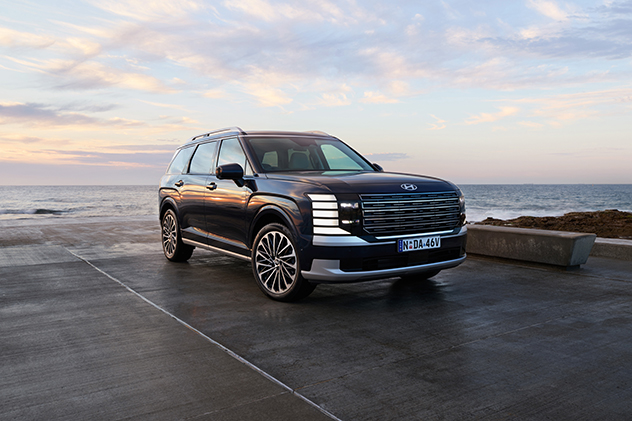
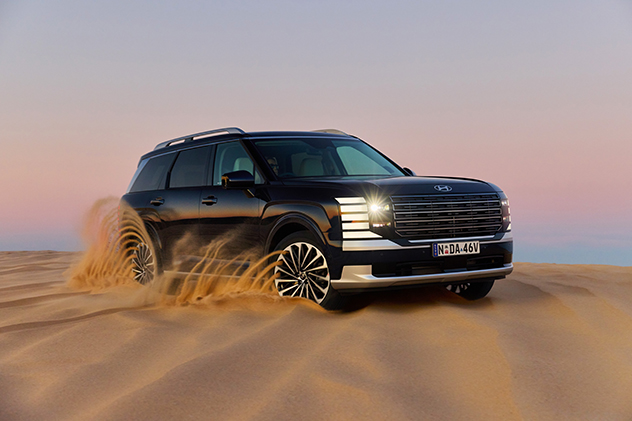

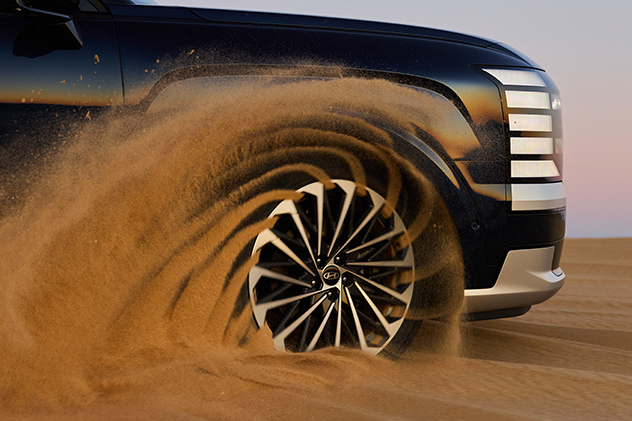
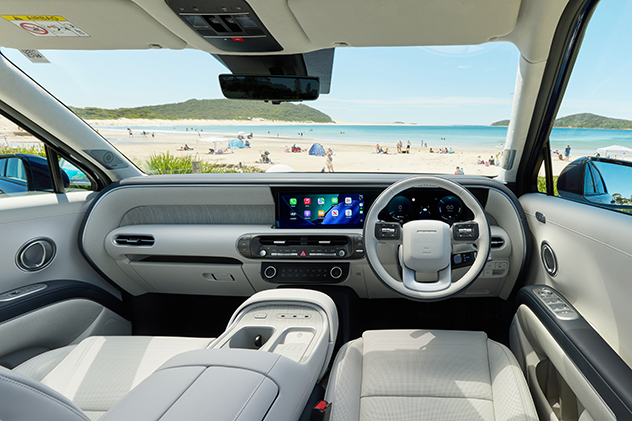

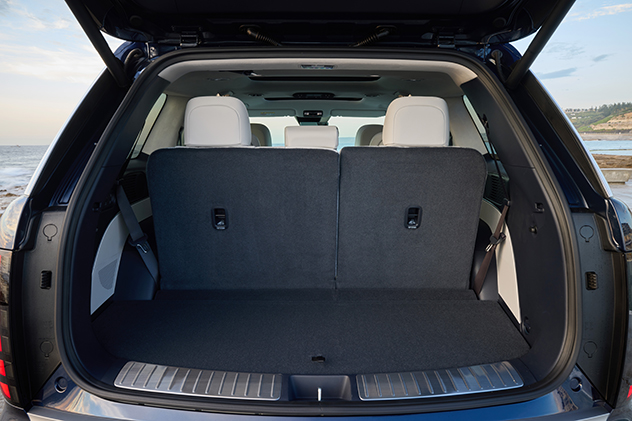
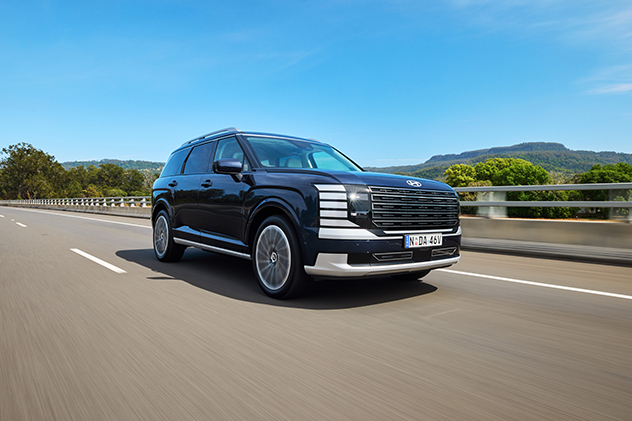
As with most Hyundai models, local tuning is at the forefront of ride and handling. So much so, in fact, that global right-hand drive development is now almost solely focused on Australia.
The result is a ride about as good as you can imagine on 21-inch wheels with a passive shock absorber, and the Palisade is an exceptional performer on a variety of road surfaces. Weight transitions gently through well-weighted and direct steering and, while not essentially sports, the Palisade feels stuck to the road and doesn’t feel bullied by its large size and weight.
Implementation of the hybrid system is good, and the Palisade delivers on promises of an EV-esque driving experience at lower speeds, however, shows a small lack of refinement at higher speeds when asked to work. The move to six drive ratios highlights this, emphasised especially in ‘eco’ drive mode where every ask for acceleration is met with a kick-in of the petrol engine and a kick-down of the transmission. On-song, at higher throttle inputs, the system works seamlessly well, but how often are you really going to have a Palisade at full noise?
The comprehensive safety suite works well for the most part, but suffers some of Hyundai’s legacy issues, such as speed sign recognition being often incorrect and met with bings and bongs for exceeding speeds.
On a high note, Hyundai has added further measures to mute and, in some cases, even permanently switch off some audible warnings and driver aids, so that’s a tick. It might also be our trick ear, but the infuriating bings and bongs triggered by the slightest climb over the speed limit also seem to come a few seconds later than previous Hyundai models as well, making the system much more tolerable overall.
The 2026 Hyundai Palisade is the kind of car we like to think we’d build if given the chance to head a car company.
A clear design brief seems to have been laid out and followed to a T, resulting in a car that knows exactly what it’s trying to be – unapologetically displaying an ‘it costs whatever it needs to cost’ attitude in the process.
A hair under $90k might seem an outlandish price to pay for a hybrid Hyundai, but, if you’ve got the cash and the criteria, it seems hard to imagine where else it could be better spent.